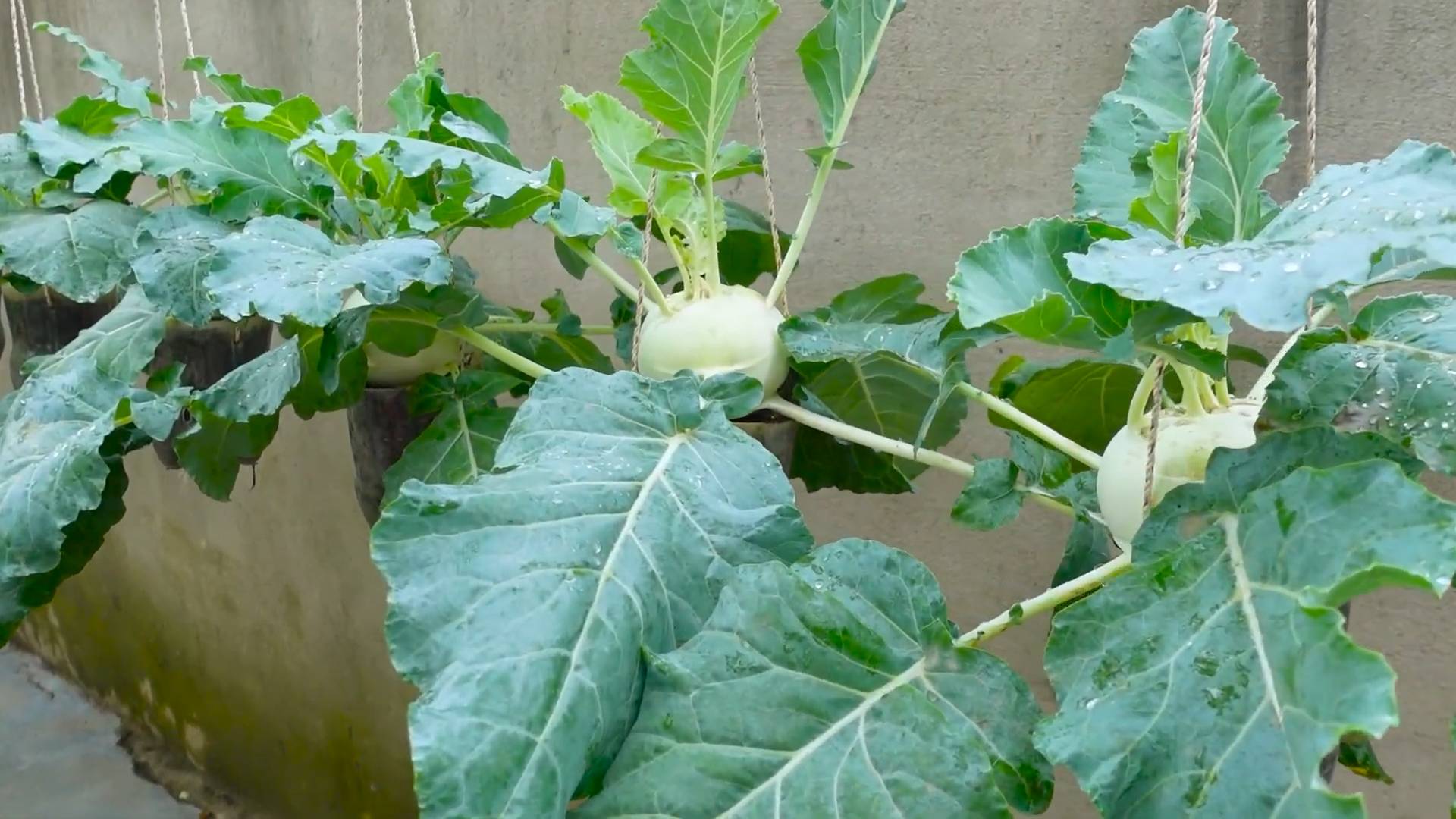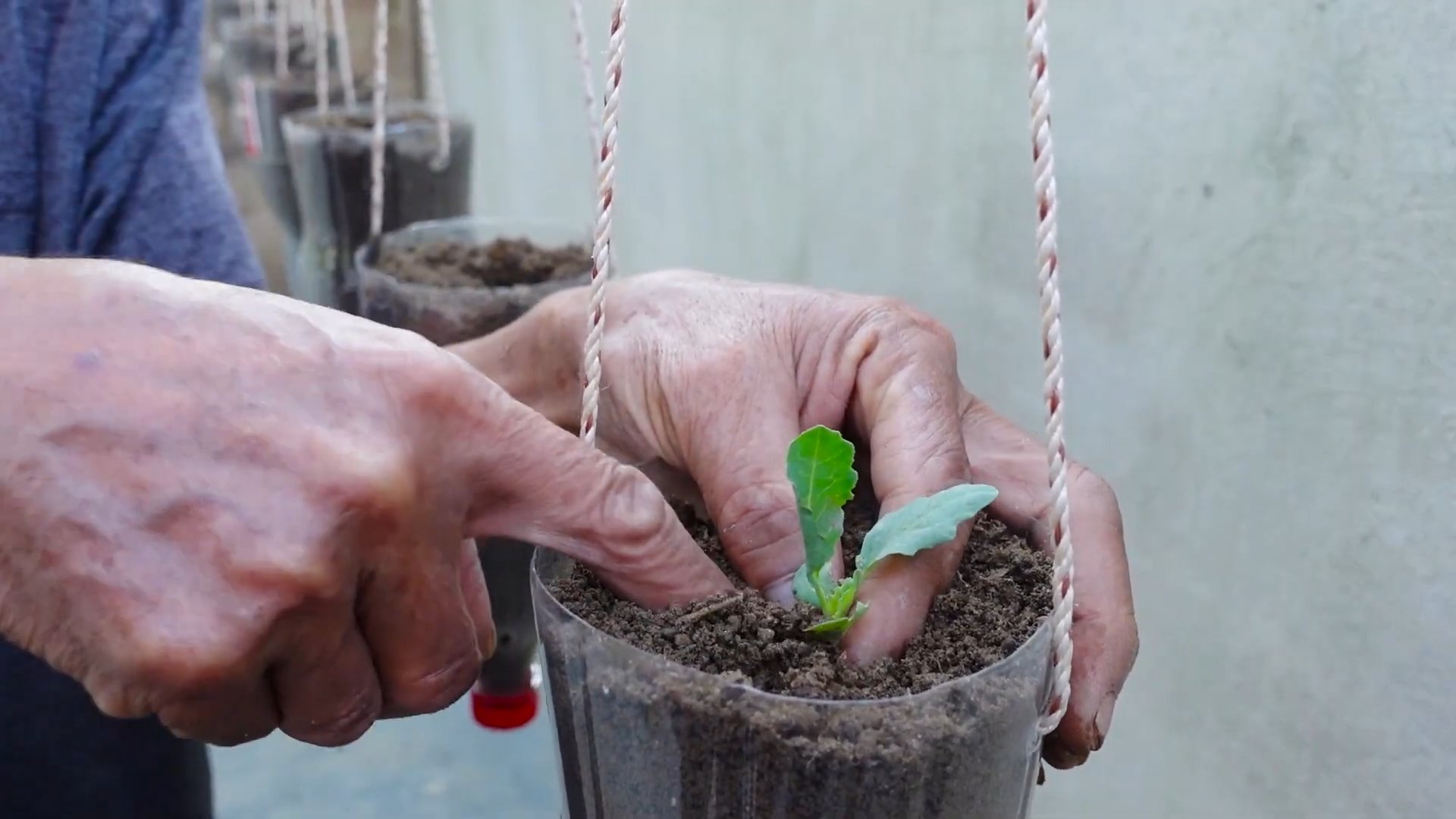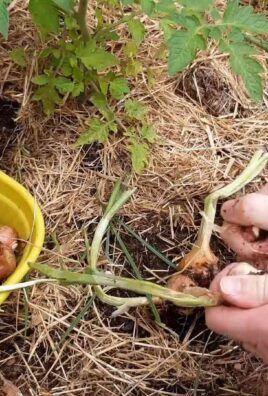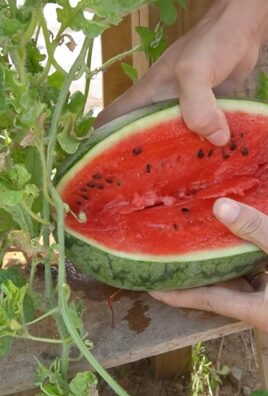Grow kohlrabi in pots and unlock a world of fresh, crunchy goodness right on your balcony or patio! Have you ever dreamed of harvesting your own unique vegetables, but felt limited by space? Well, dream no more! This DIY guide is your key to cultivating this quirky, delicious vegetable, even if you only have a small outdoor area.
Kohlrabi, sometimes called a German turnip, has a fascinating history. Originating in Europe, it’s been a staple in various cuisines for centuries, prized for its mild, slightly sweet flavor and crisp texture. It’s a versatile vegetable that can be eaten raw, cooked, or even pickled. Imagine adding freshly harvested kohlrabi to your salads, stir-fries, or slaws – the possibilities are endless!
But why grow kohlrabi in pots? In today’s world, many of us live in apartments or homes with limited garden space. This DIY trick allows anyone, regardless of their living situation, to enjoy the benefits of homegrown produce. Plus, growing in pots gives you greater control over the soil quality, watering, and sunlight exposure, leading to healthier and more abundant harvests. I’m excited to share my tips and tricks to help you successfully grow kohlrabi in pots and enjoy the satisfaction of harvesting your own delicious vegetables!

Growing Kohlrabi in Pots: A Beginner’s Guide
Hey there, fellow gardening enthusiasts! Ever thought about growing kohlrabi? It’s that quirky-looking vegetable that tastes like a cross between a turnip and a cabbage, and it’s surprisingly easy to cultivate, even if you’re short on space. I’m going to walk you through the process of growing kohlrabi in pots, so you can enjoy fresh, homegrown goodness right on your balcony or patio.
Why Grow Kohlrabi in Pots?
Before we dive in, let’s talk about why growing kohlrabi in pots is a fantastic idea:
* Space-Saving: Perfect for apartment dwellers or anyone with limited garden space.
* Control: You have complete control over the soil, watering, and sunlight.
* Mobility: You can easily move your kohlrabi plants to the best location as the seasons change.
* Pest Control: Easier to monitor and manage pests when your plants are contained.
* Early Harvest: You can often get an earlier harvest by starting your kohlrabi indoors and then moving them outside.
What You’ll Need
Okay, let’s gather our supplies. Here’s what you’ll need to get started:
* Kohlrabi Seeds: Choose a variety that suits your taste. ‘Early White Vienna’ and ‘Purple Vienna’ are popular choices.
* Pots: Select pots that are at least 6-8 inches in diameter and depth. Remember, good drainage is crucial!
* Potting Mix: Use a high-quality, well-draining potting mix. Avoid garden soil, as it can compact in pots.
* Watering Can or Hose: For regular watering.
* Fertilizer: A balanced, water-soluble fertilizer or slow-release fertilizer.
* Trowel: For planting and transplanting.
* Optional: Seed starting tray, grow lights (if starting indoors).
Getting Started: Sowing the Seeds
You have two options here: direct sowing into the pots or starting seeds indoors. I usually prefer starting indoors because it gives me a head start, especially if I live in an area with a shorter growing season.
Starting Seeds Indoors (My Preferred Method)
1. Prepare Your Seed Starting Tray: Fill your seed starting tray with a seed starting mix or the same potting mix you’ll use for the pots.
2. Sow the Seeds: Make small indentations (about ¼ inch deep) in the soil. Place 2-3 seeds in each indentation.
3. Cover the Seeds: Gently cover the seeds with soil and lightly water the tray.
4. Provide Light: Place the tray under grow lights or in a sunny windowsill. Kohlrabi needs plenty of light to germinate.
5. Keep the Soil Moist: Water regularly to keep the soil consistently moist, but not soggy.
6. Thin the Seedlings: Once the seedlings have their first true leaves (the second set of leaves), thin them out, leaving only the strongest seedling in each cell.
Direct Sowing into Pots
1. Prepare Your Pots: Fill your pots with potting mix, leaving about an inch of space at the top.
2. Sow the Seeds: Make small indentations (about ¼ inch deep) in the soil. Place 3-4 seeds in each pot.
3. Cover the Seeds: Gently cover the seeds with soil and lightly water the pots.
4. Keep the Soil Moist: Water regularly to keep the soil consistently moist, but not soggy.
5. Thin the Seedlings: Once the seedlings have their first true leaves, thin them out, leaving only the strongest seedling in each pot.
Transplanting (If Starting Indoors)
Once your seedlings have developed a few sets of true leaves and the weather outside is suitable (no more risk of frost), it’s time to transplant them into their permanent pots.
1. Harden Off the Seedlings: Before transplanting, you need to “harden off” the seedlings. This means gradually exposing them to outdoor conditions over a period of 7-10 days. Start by placing them outside for an hour or two each day, gradually increasing the time and exposure to sunlight.
2. Prepare the Pots: Fill your pots with potting mix, leaving about an inch of space at the top.
3. Carefully Remove the Seedlings: Gently remove the seedlings from the seed starting tray, being careful not to damage the roots.
4. Plant the Seedlings: Make a small hole in the soil in each pot and carefully place the seedling in the hole. The top of the root ball should be level with the soil surface.
5. Water Thoroughly: Water the newly transplanted seedlings thoroughly.
Caring for Your Kohlrabi Plants
Now that your kohlrabi plants are in their pots, it’s time to provide them with the care they need to thrive.
1. Sunlight: Kohlrabi needs at least 6 hours of sunlight per day. Place your pots in a sunny location. If you don’t have enough sunlight, consider using grow lights.
2. Watering: Water regularly, keeping the soil consistently moist but not soggy. Check the soil moisture by sticking your finger into the soil. If the top inch feels dry, it’s time to water.
3. Fertilizing: Feed your kohlrabi plants with a balanced, water-soluble fertilizer every 2-3 weeks. Alternatively, you can use a slow-release fertilizer at planting time. Follow the instructions on the fertilizer package.
4. Weeding: Keep the pots free of weeds. Weeds can compete with your kohlrabi plants for nutrients and water.
5. Pest Control: Monitor your plants regularly for pests. Common kohlrabi pests include aphids, cabbage worms, and flea beetles. If you find pests, you can try hand-picking them off the plants or using an insecticidal soap or neem oil.
6. Crop Rotation: While not as critical in pots, it’s still good practice to avoid planting kohlrabi in the same pot year after year. This helps prevent the buildup of soilborne diseases.
Harvesting Your Kohlrabi
The best part! Kohlrabi is typically ready to harvest 50-60 days after planting.
1. Check for Size: Harvest your kohlrabi when the bulb is about 2-3 inches in diameter. Larger bulbs can become tough and woody.
2. Harvesting: Gently pull the entire plant out of the pot. You can also use a knife to cut the bulb from the roots, leaving the roots in the pot.
3. Storage: Store kohlrabi in the refrigerator for up to a week. You can also freeze kohlrabi after blanching it.
Troubleshooting
Even with the best care, you might encounter some problems. Here are a few common issues and how to address them:
* Yellowing Leaves: Could be a sign of overwatering, underwatering, or nutrient deficiency. Check the soil moisture and adjust your watering accordingly. Fertilize if necessary.
* Slow Growth: Could be due to insufficient sunlight, poor soil, or pests. Make sure your plants are getting enough sunlight and fertilize them regularly. Check for pests and take appropriate action.
* Cracked Bulbs: Often caused by inconsistent watering. Try to maintain consistent soil moisture.
* Pests: As mentioned earlier, monitor your plants regularly for pests and take action as needed.
Choosing the Right Kohlrabi Variety
Selecting the right variety is key to a successful harvest. Here are a few popular choices:
* Early White Vienna: A classic, early-maturing variety with a mild flavor.
* Purple Vienna: Similar to Early White Vienna, but with a beautiful purple bulb.
* Grand Duke: A hybrid variety known for its large, uniform bulbs and excellent flavor.
* Kossak: A very large variety that can grow to be quite impressive.
Tips for Success
Here are a few extra tips to help you succeed with growing kohlrabi in pots:
* Choose the Right Pot Size: Make sure your pots are large enough to accommodate the kohlrabi plants.
* Use High-Quality Potting Mix: Avoid using garden soil, as it can compact in pots.
* Water Regularly: Kohlrabi needs consistent moisture to thrive.
* Fertilize Regularly: Feed your plants with a balanced fertilizer every 2-3 weeks.
* Monitor for Pests: Check your plants regularly for pests and take action as needed.
* Harvest at the Right Time: Harvest your kohlrabi when the bulb is about 2-3 inches in diameter.

Conclusion
So, there you have it! Growing kohlrabi in pots is not only achievable, but it’s also a remarkably rewarding experience, especially for those with limited garden space or those looking to extend their growing season. This DIY trick transforms even the smallest balcony or patio into a thriving mini-farm, bringing the unique flavor and texture of kohlrabi right to your table.
Why is this a must-try? Because it democratizes gardening. No longer is fresh, homegrown produce the exclusive domain of sprawling suburban gardens. With a few pots, some quality soil, and a sunny spot, anyone can cultivate their own kohlrabi. Imagine the satisfaction of harvesting crisp, juicy kohlrabi bulbs that you nurtured from seed to table. Think of the vibrant green leaves adding a nutritious boost to your salads and stir-fries. And consider the bragging rights you’ll earn when you tell your friends you grew your own kohlrabi!
But the benefits extend beyond mere convenience and bragging rights. Growing kohlrabi in pots gives you unparalleled control over the growing environment. You can easily move your plants to chase the sun, protect them from unexpected frosts, and monitor their water and nutrient levels with precision. This level of control translates to healthier, more productive plants and, ultimately, a more bountiful harvest.
Looking for variations? Absolutely! Consider experimenting with different kohlrabi varieties. ‘Early White Vienna’ and ‘Early Purple Vienna’ are classic choices, but don’t be afraid to branch out and try some of the newer cultivars. You can also companion plant your kohlrabi with herbs like dill or chamomile to attract beneficial insects and deter pests. Another fun variation is to succession plant, sowing new seeds every few weeks to ensure a continuous supply of fresh kohlrabi throughout the growing season.
Don’t be intimidated by the prospect of growing your own vegetables. Kohlrabi is a relatively easy crop to cultivate, even for beginners. With a little bit of planning and attention, you’ll be amazed at how quickly your plants will thrive.
We wholeheartedly encourage you to give this DIY trick a try. Start small, experiment with different techniques, and most importantly, have fun! And once you’ve harvested your first crop of homegrown kohlrabi, we’d love to hear about your experience. Share your photos, tips, and tricks in the comments below. Let’s build a community of kohlrabi enthusiasts and inspire others to embrace the joys of container gardening. So, grab your pots, seeds, and soil, and get ready to embark on a delicious and rewarding gardening adventure. You’ll be amazed at how easy it is to grow kohlrabi in pots and enjoy the fruits (or rather, vegetables) of your labor.
Frequently Asked Questions (FAQ)
What size pot is best for growing kohlrabi?
The ideal pot size for growing kohlrabi is at least 12 inches in diameter and 12 inches deep. This provides enough space for the roots to develop properly and allows the plant to access sufficient nutrients and water. If you’re planning to grow multiple kohlrabi plants in a single container, choose a larger pot accordingly, ensuring each plant has adequate space. Remember, cramped roots can lead to stunted growth and smaller bulbs.
What type of soil should I use for growing kohlrabi in pots?
Kohlrabi thrives in well-draining, fertile soil that is rich in organic matter. A good potting mix specifically formulated for vegetables is an excellent choice. You can also create your own mix by combining equal parts of compost, peat moss (or coconut coir), and perlite or vermiculite. Avoid using garden soil in pots, as it tends to compact and doesn’t drain well, which can lead to root rot. Adding a slow-release fertilizer to the potting mix at planting time will provide a steady supply of nutrients throughout the growing season.
How much sunlight does kohlrabi need?
Kohlrabi requires at least 6 hours of direct sunlight per day to thrive. Choose a sunny location for your pots, such as a south-facing balcony or patio. If you live in a particularly hot climate, providing some afternoon shade can help prevent the plants from overheating. If you don’t have access to enough natural sunlight, you can supplement with grow lights.
How often should I water kohlrabi in pots?
Kohlrabi needs consistent moisture to grow properly, especially when grown in pots. Water deeply whenever the top inch of soil feels dry to the touch. Avoid overwatering, as this can lead to root rot. During hot, dry weather, you may need to water your plants daily. Using a moisture meter can help you determine when your plants need watering.
How do I fertilize kohlrabi in pots?
Kohlrabi is a heavy feeder and benefits from regular fertilization. In addition to incorporating slow-release fertilizer into the potting mix at planting time, you should also feed your plants with a liquid fertilizer every 2-3 weeks. Choose a fertilizer that is high in nitrogen and potassium, which are essential for leaf and bulb development. Follow the instructions on the fertilizer label carefully to avoid over-fertilizing, which can damage your plants.
What are some common pests and diseases that affect kohlrabi?
Common pests that can affect kohlrabi include aphids, cabbage worms, and flea beetles. You can control these pests by handpicking them off the plants, using insecticidal soap, or applying Bacillus thuringiensis (Bt) for cabbage worms. Common diseases that can affect kohlrabi include clubroot and downy mildew. To prevent these diseases, choose disease-resistant varieties, practice crop rotation, and avoid overwatering.
When is the best time to harvest kohlrabi?
Kohlrabi is typically ready to harvest 6-8 weeks after planting. The bulbs should be about 2-3 inches in diameter. Don’t let the bulbs get too large, as they can become tough and woody. To harvest, simply cut the bulb from the stem just above the soil line. The leaves are also edible and can be harvested at any time.
Can I grow kohlrabi in pots indoors?
Yes, you can grow kohlrabi in pots indoors, but you’ll need to provide adequate light. A sunny south-facing window may be sufficient, but you’ll likely need to supplement with grow lights. Make sure to choose a well-draining potting mix and water regularly. Indoor-grown kohlrabi may not produce as large of bulbs as outdoor-grown kohlrabi, but you can still enjoy the fresh, homegrown flavor.
What are some good companion plants for kohlrabi?
Good companion plants for kohlrabi include dill, chamomile, rosemary, mint, and nasturtiums. These plants can help attract beneficial insects, deter pests, and improve the overall health of your kohlrabi plants. Avoid planting kohlrabi near other members of the brassica family, such as broccoli, cabbage, and cauliflower, as they can compete for nutrients and attract the same pests and diseases.
How do I store kohlrabi after harvesting?
After harvesting, remove the leaves from the kohlrabi bulbs and store them separately. The bulbs can be stored in the refrigerator for several weeks. The leaves can be stored in the refrigerator for a few days. Kohlrabi can also be frozen for longer storage. To freeze kohlrabi, blanch the bulbs and leaves in boiling water for a few minutes, then transfer them to an ice bath to stop the cooking process. Drain well and store in freezer bags or containers.





Leave a Comment